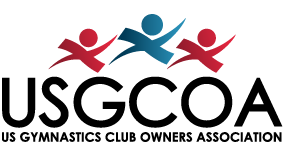Should Your Club Offer Parkour Gymnastics?
Originating from the streets of France in the 1990s, parkour gymnastics has traveled worldwide, crazing many American athletes due to its artistry, efficiency, and fluidity. As one of the newest disciplines introduced by USAG, we can expect to see an influx of interest in this latest sport form, especially with predictions of it becoming part of the Olympic Games per USAG’s 2021-2024 High-Performance Plan.
So, should your club offer parkour classes? This article will walk you through what parkour is, how it gained popularity, and how offering parkour gymnastics at your club can help benefit your club.
What Is Parkour?
The history of parkour is a recent but an interesting one. Parkour was developed as a concept by David Belle, the son of a Parisian firefighter. Belle took inspiration from his father’s athletic training and teachings with a group of friends to practice various forms of jumping and climbing over barriers found throughout the city. As a result, often consists of ingenious ways to overcome obstacles in urban and natural landscapes that includes running, vaulting, and jumping as one fluid movement.
Parkour is sometimes also known as free running, making it an athletic discipline with runners getting from point A to point B in the most fluid and creative way possible. It takes skill and awareness of your limits and surroundings to free run effectively and safely.
Why It’s Popular
Parkour brings a freshness to training and athletics. It injects an element of fun while still building muscle mass, strengthening bones, and building core strength. It’s popular with children and teenagers for this reason!
Gymnasts can utilize parkour as a new training method, as it hones their precision and forces them to see their environment in a new way. Parkour requires extreme focus and determination to learn techniques like climbing fences, vaulting obstacles, and precision jumping safely. Learning and practicing parkour tends to be a two-stage process consisting of warming up/physical conditioning and learning the appropriate techniques.
Parkour is generally considered an individual sport. The idea is that you only rely on yourself and your body to use movements in new and creative ways. The lack of contact with other people made the popularity of parkour sky-rocket throughout the COVID-19 pandemic because it is considered a pandemic-safe, contactless way of exercising.
As a result of the Parkour gaining popularity during shutdown, you’ll see the SEO benefits from search engines, too. Customers in your area will google “parkour gymnastics near me”, they’ll see your club’s website, and may even sign their kids up for other classes while they’re at it.
Of course, in your club, you will need to provide equipment for proper and safe ways to practice parkour, but it’s usually equipment you’ll already have on hand, such as soft-landing pads and rubberized obstacles. Naturally there are always other equipment that can be brought in, but this is something you can start to explore with little to no equipment investment.
Ways to Integrate Parkour Gymnastics Into Your Club
As aforementioned, getting the right setup into your club for parkour classes is your first step. Parkour can be dangerous, there’s no point hiding that – but so can other gymnastics disciplines. And like any other sport, it becomes a lot less dangerous when your athletes practice in a safe environment and are taught the correct techniques.
Recommended Parkour Gymnastics Equipment
Here’s a breakdown of the most popular parkour equipment, and what it’s used for:
- Obstacles: This will look like anything your gymnasts can jump over! This can include small walls, foam blocks, or round jumping platforms.
- Balancing Elements: This could be balance beams, ledges of foam pits, or special balance disks.
- Climbing elements: Having ropes, rope ladders, rock wall climb, or specialized ladders.
- Hurdles: Learning when and how to jump safely while running is an important part of parkour. Have some hurdles of different sizes fitted in your gym to help athletes build this skill.
- Rings: Encourage your athletes to swing from one to the other monkey-style, or hang from both to get from point A to point B.
- Trampolines: As you know this is a great way to encourage further core strengthening and have your gymnasts enjoy showing off with flips and somersaults. Trampolines will undoubtedly be one of the most popular parts of your parkour class.
Get creative with your equipment! In parkour, nothing is off-limits. Just make sure to keep it safe and follow all safety regulations.
Games
Introducing games to encourage gymnasts to show off their skills and get familiar with the equipment is a great way to teach this new discipline. You can introduce games like:
- Timed obstacle courses
- Musical chairs
- Ball chases
- The floor is lava
- Spiderman crawls
This new training discipline can spark new revenue streams by virtue of its popularity, open new lanes for competing in the future Olympic games and help your athletes hone in on their skills and core strength in new and creative ways. Make sure to keep up to date on USAG’s latest guidelines and news about parkour, as we could be seeing many more new and exciting features in the coming years from this discipline!


